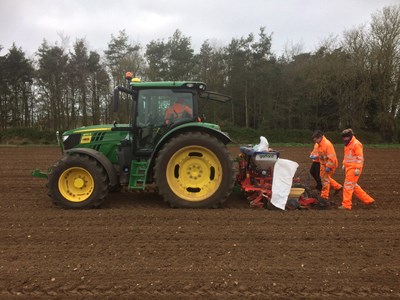Various models have been developed to predict the likelihood of bolters. The original ‘Cool day model ’ looks at the number of days when the maximum temperature is below 12oC, whereas the Vernalisation-intensity bolting model calculates a seasonal intensity of vernalisation by weighting the hourly temperatures that plants experience for their vernalising effect, and summating these weighted temperatures over the period between drilling and the end of June. In practice, the temperature-weighting and the statistical break-point procedures of the scientific model proved too complex and the BBRO commissioned revaluation of the various bolting prediction models after the cold conditions of 2013 to see if this could be simplified.
This simplification involved collating bolter numbers from all of the BBRO’s main variety trials done since 1972 and all of the Early-Sown Bolter trials done since 2000 together with corresponding temperature records from nearby meteorological stations. These datasets were then comprehensively re-analysed to define the range of temperature and period of exposure that accounted for most of the statistical variation in the numbers of bolters. This proved to be the total number of hours that temperatures were below 7oC between sowing and the end of June.
Remember, temperature is considered to affect the seed from the moment it begins to absorb water (imbibition, the first stage of germination)
Inevitably there has been some debate about the accuracy and application of different approaches. Our advice for 2019, is not based on any one of these but has considered, especially with the unseasonal warm day time temperatures, the actual of hourly temperature profile. This shows that we have been accumulating a lot of risk hours. With the forecast temperatures returning to a more seasonal norm, it is predicted that out of the total 192 hours, over 50% will be risk hours.
As you can see, it’s a balancing act of risk: against the need to get crops in early into what are currently good soil conditions against the likelihood of triggering bolting. On balance, our advice is to wait a little longer. We are not far away from the start of ‘normal’ early drilled crops.
Conventional advice is of course that for drilling from the beginning of March, growers should drill varieties that are considered to have a lower bolting risk and to not to drill other varieties (those with a red cross against them on the Recommended List) before the middle of March.




